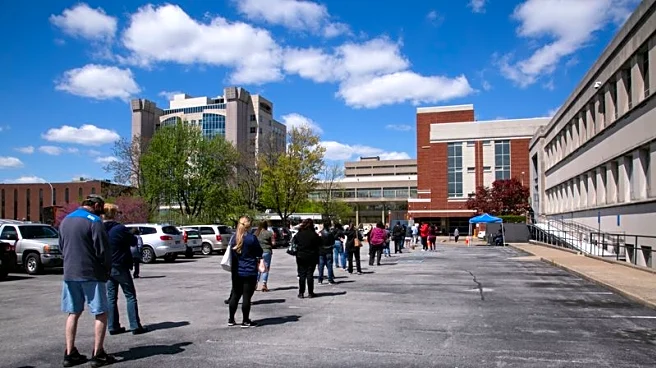What's Happening?
The longest federal government shutdown in U.S. history is nearing an end, but it has significantly impacted the economy. Approximately 1.25 million federal workers have not been paid since October 1,
leading to reduced spending and economic activity. Thousands of flights have been canceled, affecting the travel industry. The Congressional Budget Office estimates that the shutdown will reduce growth in the fourth quarter by about 1.5 percentage points, with $11 billion in economic activity permanently lost. The shutdown has exacerbated existing economic challenges, including sluggish hiring and elevated inflation.
Why It's Important?
The shutdown's impact on the economy is profound, affecting federal workers, contractors, and various industries. The travel industry has lost billions due to canceled flights, and consumer sentiment has dropped significantly, potentially reducing spending. The delay in SNAP benefits has created financial disruptions for millions of households. The Federal Reserve's ability to monitor the economy is hindered by the lack of data, affecting interest rate decisions. The shutdown highlights vulnerabilities in the economy and the dependence on government operations for stability.
What's Next?
As Congress moves toward reopening the government, federal workers are expected to receive back pay, which may boost economic activity. However, the long-term effects of the shutdown, such as missed flights and postponed purchases, will not be fully recovered. The Federal Reserve may delay interest rate cuts due to incomplete economic data, impacting borrowing and spending. The resolution of SNAP benefits and federal contracts will be crucial in stabilizing affected households and businesses.
Beyond the Headlines
The shutdown has exposed the fragility of the U.S. economy's reliance on government operations. It raises questions about the sustainability of economic growth amid political disruptions. The impact on consumer sentiment and spending could have long-term effects on economic stability. The situation underscores the need for contingency plans to mitigate the effects of future shutdowns.













